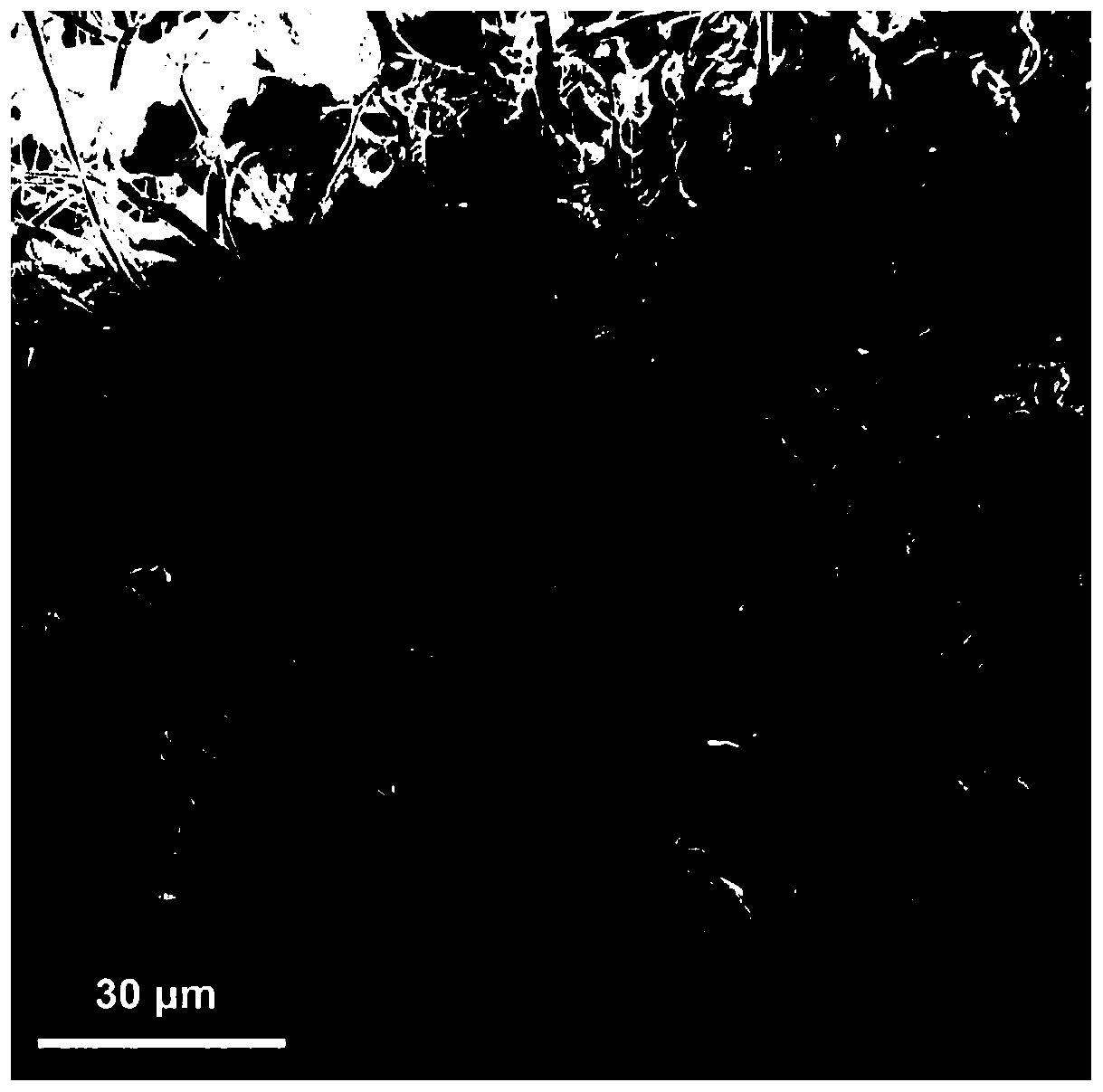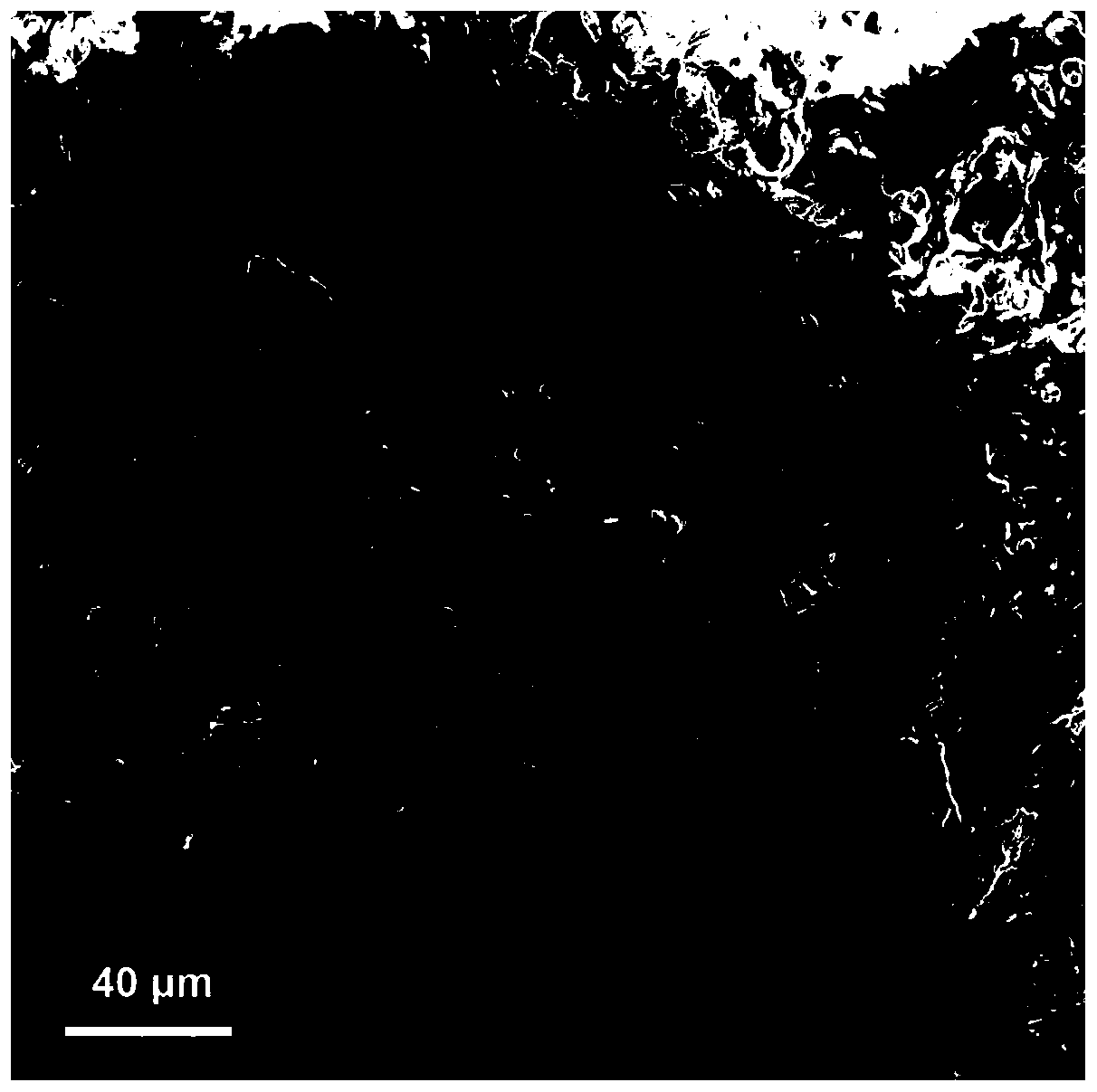Silicate clay modified hemostatic material and preparation method thereof
A hemostatic material and silicate technology, applied in pharmaceutical formulations, surgical adhesives, medical science and other directions, can solve the problems of limited adhesion of hemostatic materials, difficulty in subsequent treatment, and reduced hemostatic ability, etc. The effect of reducing shrinkage and hemostasis is fast
- Summary
- Abstract
- Description
- Claims
- Application Information
AI Technical Summary
Problems solved by technology
Method used
Image
Examples
Embodiment 1
[0040] (1) Preparation of halloysite nanotubes:
[0041] Weigh 5.0 g of raw halloysite that has been ground, washed and centrifuged, add 500 mL of deionized water and ultrasonically crush it at 1500 W for 2 hours to obtain halloysite nanorods with an average size below 1 μm.
[0042] (2) Preparation of halloysite-modified hemostatic material:
[0043] Dissolve 1.0 g of polyvinylpyrrolidone in 10 mL of absolute ethanol, add 1.50 g of halloysite nanorods, and stir in a water bath at room temperature for 36 hours; perform electrospinning and set the drum speed to 500 r / min, and the distance between the needle and the drum (receiving distance) is 21cm, the liquid flow rate is 0.05mL / min, the positive electrode voltage is 10kV, and the negative electrode voltage is 2kV, the haemostatic material modified by halloysite is prepared, and the SEM map is as followsfigure 1 Shown: Halloysite groups in the halloysite-modified hemostatic material are distributed in the 3D network structure ...
Embodiment 2
[0047] (1) Preparation of halloysite nanotubes:
[0048] Weigh 5.0 g of raw halloysite that has been ground, washed and centrifuged, add 500 mL of deionized water and ultrasonically crush it at 1500 W for 2 hours to obtain halloysite nanorods with an average size below 1 μm.
[0049] (2) Preparation of halloysite-modified hemostatic material:
[0050] Dissolve 1.0 g of polyvinylpyrrolidone in 10 mL of absolute ethanol, add 0.50 g of halloysite nanorods, and stir in a water bath at room temperature for 36 hours; perform electrospinning and set the drum speed to 500 r / min, the distance between the needle and the drum to 21 cm, and the liquid The speed is 0.05mL / min, the positive electrode voltage is 10kV, and the negative electrode voltage is 2kV to prepare halloysite-modified hemostatic material.
[0051] (3) Hemostasis experiment:
[0052] Rats were anesthetized by intraperitoneal injection of 10% chloral hydrate (0.3ml / 100g), fixed in the supine position, and disinfected. A...
Embodiment 3
[0054] (1) Preparation of attapulgite nanorods:
[0055] Weigh 5.0 g of raw ore attapulgite after grinding, washing and centrifugation, add 500 mL of deionized water and ultrasonically crush it at 1500 W for 2 hours to obtain attapulgite nanorods with an average length of less than 2 μm.
[0056] (2) Preparation of hemostatic material modified by attapulgite:
[0057] Dissolve 1.0 g of polyvinylpyrrolidone in 10 mL of absolute ethanol, add 1.50 g of attapulgite nanorods, and stir in a water bath at room temperature for 36 hours; perform electrospinning by setting the drum speed to 500 r / min, and the distance between the needle and the drum to 21 cm. The speed is 0.05mL / min, the positive voltage is 10kV, and the negative voltage is 2kV. The hemostatic material modified by attapulgite is obtained, and the SEM spectrum is as follows figure 2 As shown: the hemostatic material has a rough surface film structure, and the film is composed of attapulgite after partial rod crystal b...
PUM
| Property | Measurement | Unit |
|---|---|---|
| size | aaaaa | aaaaa |
| length | aaaaa | aaaaa |
Abstract
Description
Claims
Application Information
 Login to View More
Login to View More - R&D
- Intellectual Property
- Life Sciences
- Materials
- Tech Scout
- Unparalleled Data Quality
- Higher Quality Content
- 60% Fewer Hallucinations
Browse by: Latest US Patents, China's latest patents, Technical Efficacy Thesaurus, Application Domain, Technology Topic, Popular Technical Reports.
© 2025 PatSnap. All rights reserved.Legal|Privacy policy|Modern Slavery Act Transparency Statement|Sitemap|About US| Contact US: help@patsnap.com



